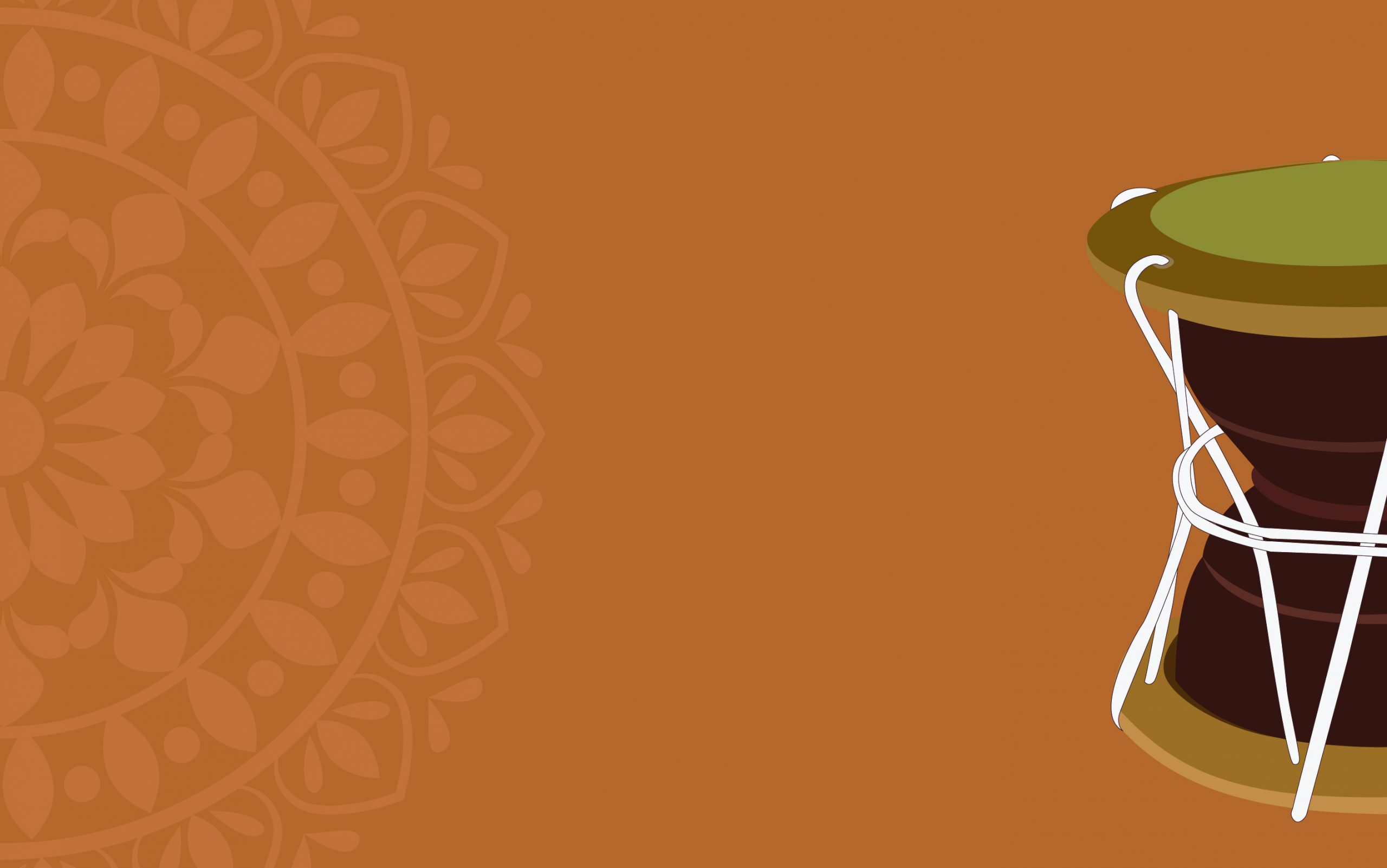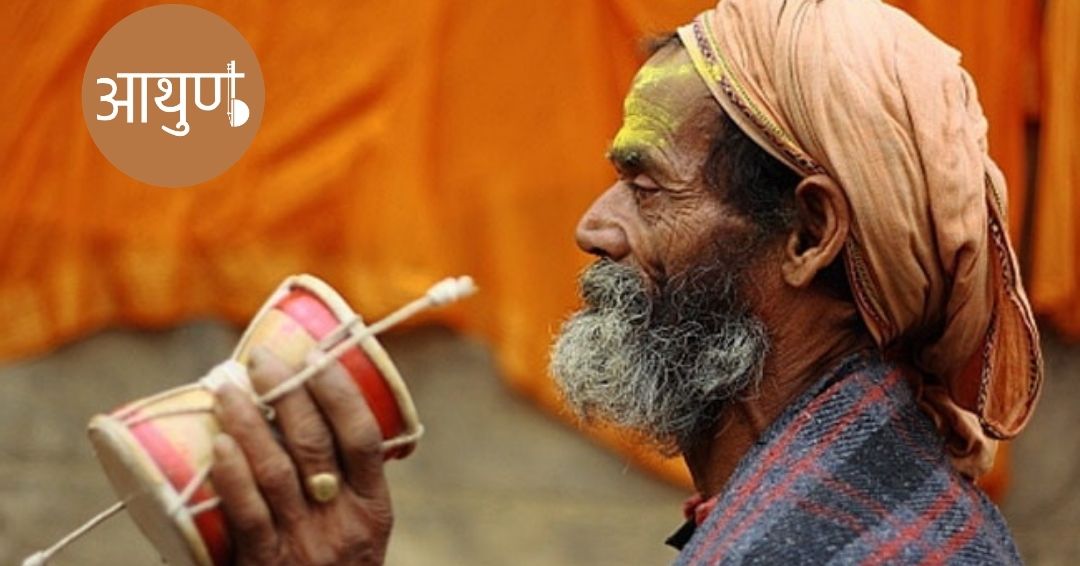


A Damru is a small two-headed drum, used in Hinduism and Tibetan Buddhism music. In Hinduism, the damru is known as the instrument of the deity Shiva, associated with Tantric traditions. It is said to be created by Shiva to produce spiritual sounds by which the whole universe has been created and regulated. In Tibetan Buddhism, the damru is used as an instrument in tantric practices.

Drums appear with wide geographic distribution in archaeological excavations from Neolithic times onward; one excavated in Moravia is dated to 6000 BCE. Early drums consisted of a section of hollowed tree trunk covered at one end with reptile or fish skin and were struck with the hands. Later the skin was taken from hunted game or cattle, and sticks were used.
The double-headed drum came later, as did pottery drums in various shapes. The heads were fastened by several methods, some still in use. The skin
might be secured to single-headed drums by pegs, nails, glue, buttoning (through holes in the membrane), or neck lacing (wrapping a cord around the membrane overlap). Double-headed drums were often directly cord-tensioned (i.e., through holes in the skin). Modern European orchestral drums often combine two hoops pressing against each head (one rolled in the skin, the other outside) with indirect lacing (i.e., to the hoops).
The drum is typically made of wood, metal with leather drum heads at both ends. The resonator is made of brass. The height of the damru is 6 inches and weight varies from 250-330 gm. Its height ranges from a few inches to a little over one foot. It is played single-handedly. The strikers are typically beads fastened to the ends of leather cords around the waist of the damru. Knots in the leather can also be used as strikers; crocheted material is also common. As the player waves the drum using a twisting wrist motion, the strikers beat on the drumhead.